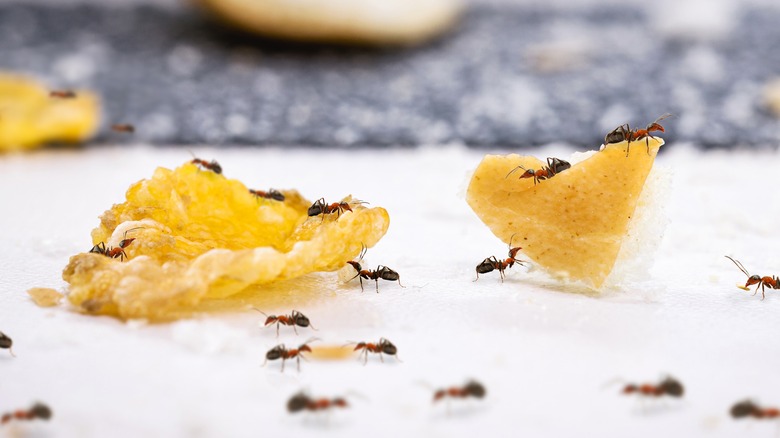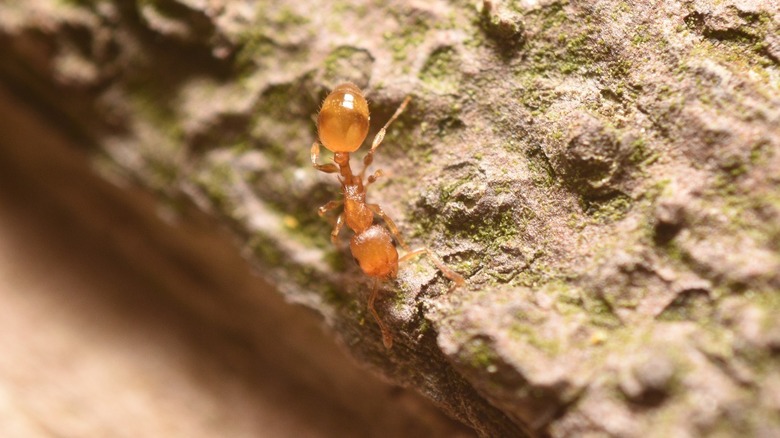How To Identify And Get Rid Of Grease Ants
While there are over 800 known ant species in the United States, only seven are typically considered to be a common household nuisance. The grease ant — also known as the thief ant — is one of them and is exceptionally difficult to get rid of due to its small stature and ability to survive harsh conditions and overtake neighboring colonies. Luckily, grease ant prevention is pretty simple, and when you're thrown into battle with an invading colony, there is a multitude of ways to fight back.
Ants in your home are a seriously annoying issue and need to be addressed as soon as you see scouts. Grease ants are most prominent in the summer and can be a persistent enemy if they discover a food source. That's why it's important to use preventative measures not just in the summer, but whenever the weather is warm. Sprays and all-natural mixtures can do the trick, or simply ensure spills are wiped away quickly, and food is never left out in the open.
Grease ant identification
Grease ants are commonly mistaken for their arthropod cousin, the sugar ant. However, they're quite different. The defining characteristic between these two relatives is their choice of nutrition. As the name suggests, grease ants prefer a high-fat, high-protein diet, while sugar ants crave sweets. Oil, peanut butter, nuts, and even meat are all invitations for a grease ant party. That being said, both types are considered to be opportunistic feeders who will eat anything they find.
Grease ants tend to be yellow to light or dark brown and are also much smaller than sugar ants, measuring around 1½ millimeters in length. Grease ants are also called thief ants because of their feeding and nesting habits, which also separates them from other ant varieties. These creepy crawlies purposely build their homes next to other ant colonies, stealing from the opposition's food supply and kidnapping larvae. Additionally, they typically build their nests in organic materials, such as under rocks and shallow soil.
[Featured image by Mangodreads via Wikimedia Commons | Cropped and scaled | CC-BY-SA-4.0]
How to fight back
If you've accidentally left food out in the kitchen overnight, chances are that the grease ants have created a scent trail to lead their comrades to the substance. So, it's important to eliminate these as soon as you see them. Simple soap and water won't do much, but a mixture of vinegar and water will clear away the invisible path. Spray this mixture wherever you see ants, both indoors and outdoors. While outside, be sure all cracks have been caulked because grease ants are known to slip through the smallest of holes.
There are also a few effective ways to kill and prevent ant infestations, and they're all readily accessible. This four-ingredient ant killer uses water and three household staples — 2 tablespoons of baking soda, 2 tablespoons of dish soap, and 2 cups of apple cider vinegar. Just mix this together and spray where necessary. However, peppermint essential oil is a nice, fragrant alternative that is effective at killing ants and keeping your home insect free. Fill a bottle with 2 cups of water and 20 drops of peppermint essential oil, shake it up, and spray it around the baseboards, cracks, and other susceptible entry points. Keep in mind that peppermint oil can be toxic if ingested, so make sure to keep it away from pets and children, per Healthline.


